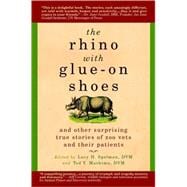
Note: Supplemental materials are not guaranteed with Rental or Used book purchases.
Purchase Benefits
What is included with this book?
| Foreword | p. ix |
| Introduction | p. xiii |
| Close Connections | p. 1 |
| Tough Guy Hondo | p. 5 |
| The Eel and the Bartender | p. 14 |
| Earring Boy | p. 21 |
| Kachina's Bones | p. 29 |
| Raising Kayavak | p. 41 |
| Technology Helps | p. 53 |
| The Rhino with Glue-On Shoes | p. 57 |
| Pandas in Their Own Land | p. 68 |
| When Whale Sharks Fly | p. 77 |
| Patch | p. 89 |
| Anesthesia for a Frog | p. 97 |
| Getting Physical | p. 105 |
| La Recapture (The Recapture) | p. 109 |
| A Camel in the Snow | p. 119 |
| The Bikers, the Students, and the Crocodile | p. 128 |
| Tracking a Snared Elephant | p. 138 |
| Partners in the Mist: A Close Call | p. 148 |
| The Katrina Dolphins | p. 160 |
| Puzzles and Mysteries | p. 171 |
| The Limping Tiger | p. 175 |
| Sliced Bananas in Jell-O | p. 184 |
| On the Horn of a Dilemma | p. 195 |
| The Bugs Have Bugs? | p. 207 |
| Death of a Lemur: An Unsolved Mystery | p. 215 |
| Baker D | p. 227 |
| Crossover | p. 237 |
| Tulip | p. 241 |
| Empathy | p. 252 |
| Polar Bears STAT | p. 261 |
| Water-Breathing Dragons | p. 271 |
| Amali's Example | p. 285 |
| Alfredito the Hippo | p. 297 |
| A Final Word | p. 307 |
| Acknowledgments | p. 311 |
| Table of Contents provided by Ingram. All Rights Reserved. |
The New copy of this book will include any supplemental materials advertised. Please check the title of the book to determine if it should include any access cards, study guides, lab manuals, CDs, etc.
The Used, Rental and eBook copies of this book are not guaranteed to include any supplemental materials. Typically, only the book itself is included. This is true even if the title states it includes any access cards, study guides, lab manuals, CDs, etc.
Excerpted from The Rhino with Glue-on Shoes: And Other Surprising True Stories of Zoo Vets and their Patients
All rights reserved by the original copyright owners. Excerpts are provided for display purposes only and may not be reproduced, reprinted or distributed without the written permission of the publisher.